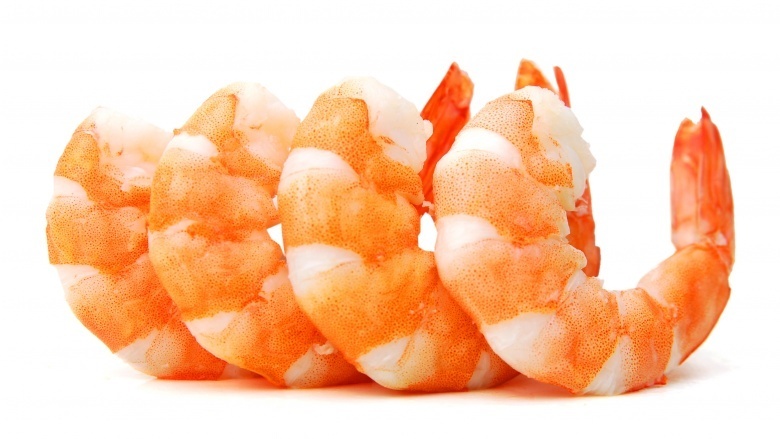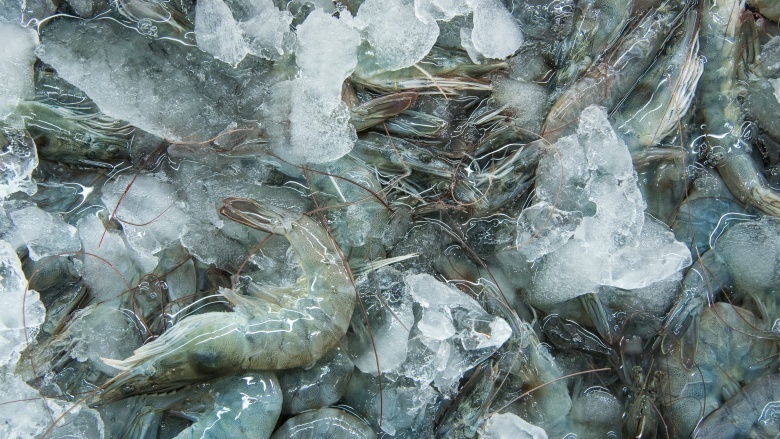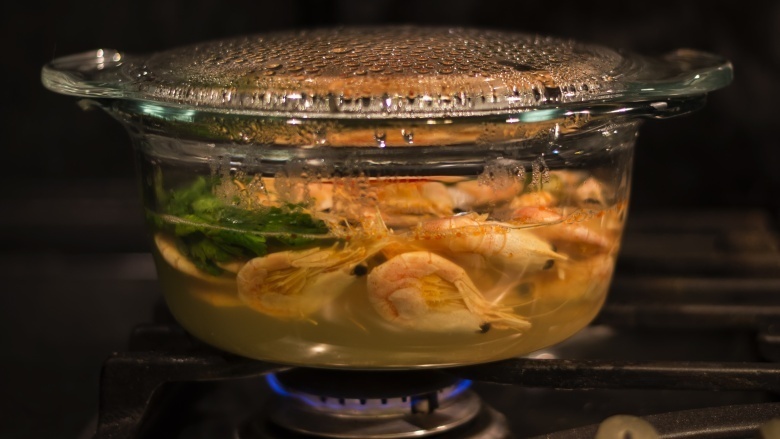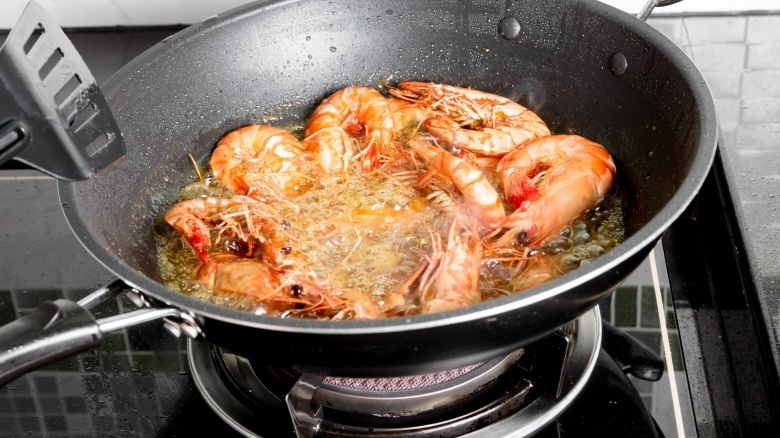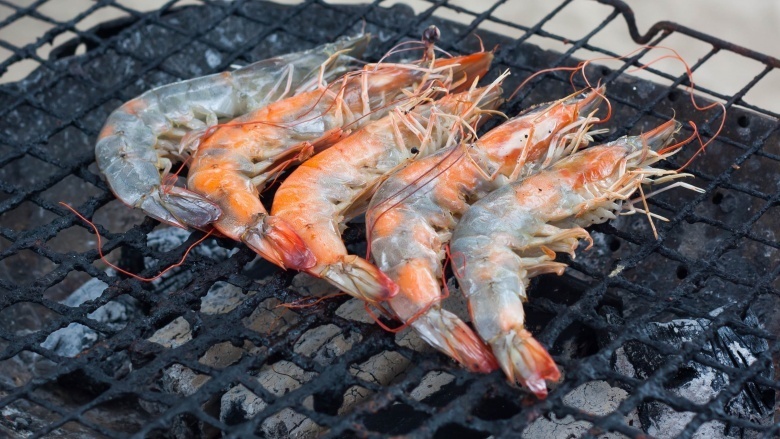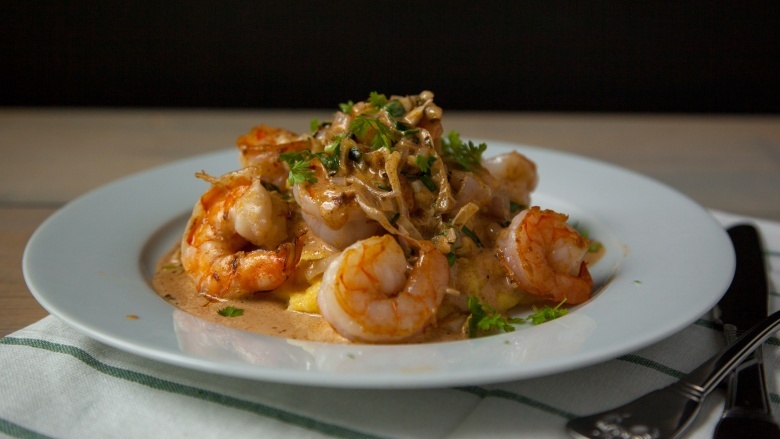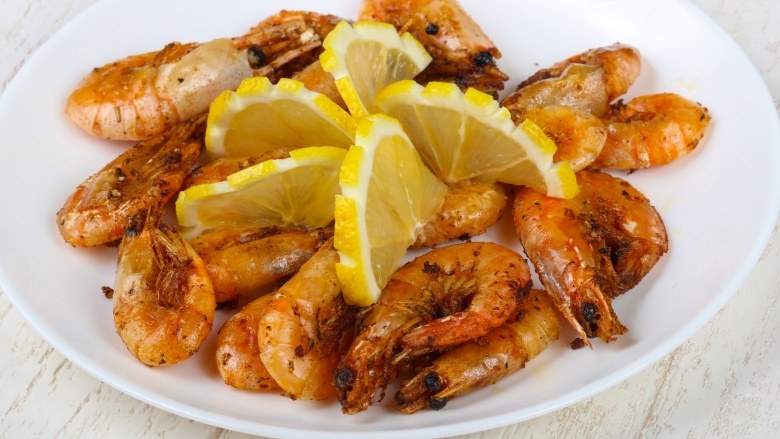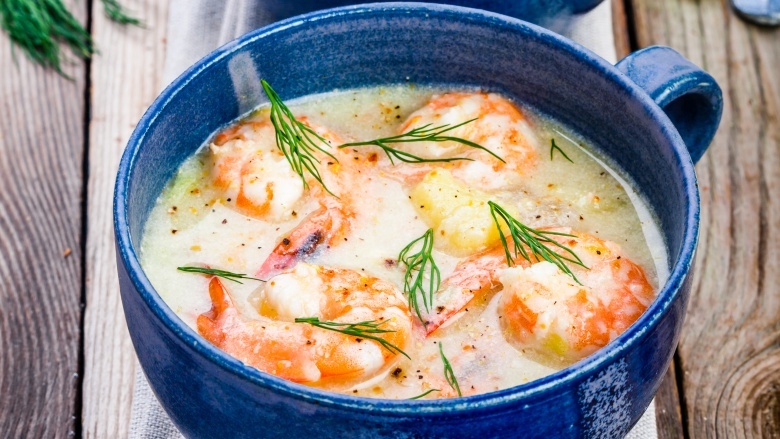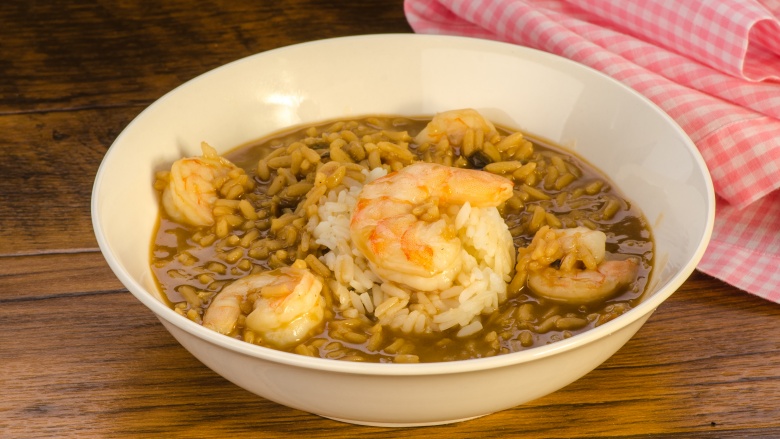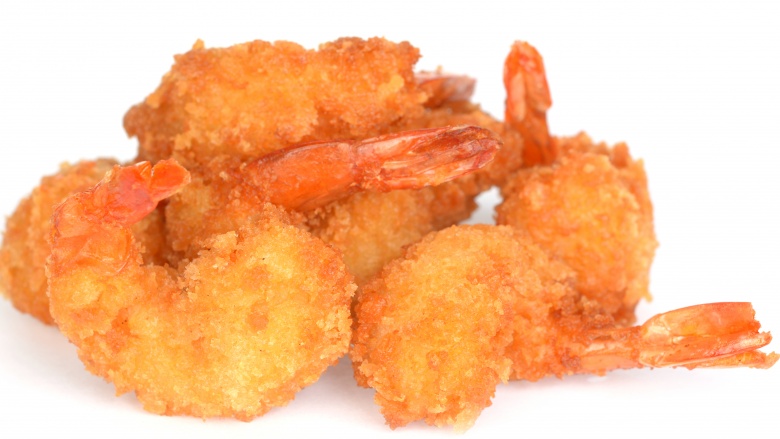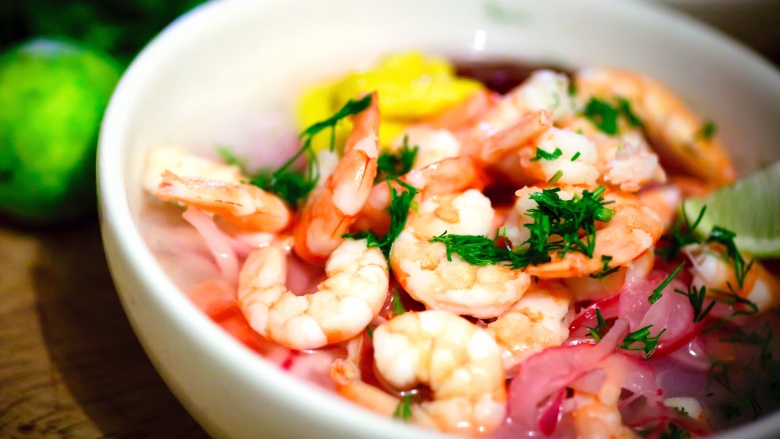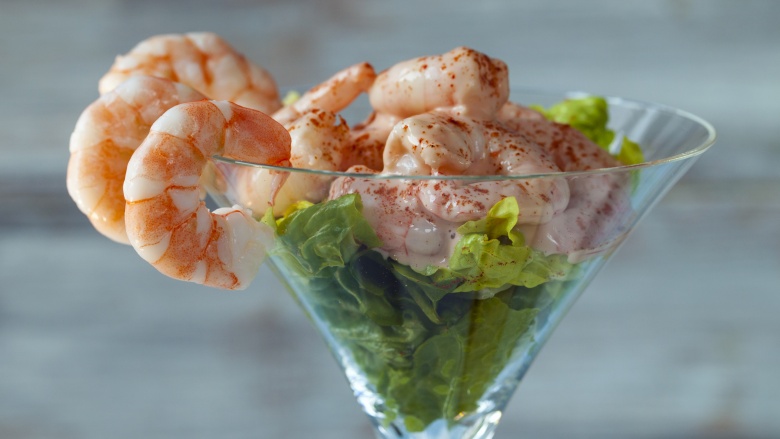How To Cook Perfect Shrimp 10 Different Ways
Shrimp were probably named before they were cooked, because if the discoverer had bothered to cook one first, they would be called "awesomes." And if you have ever eaten them, you know that shrimp are great with everything. No matter which way you cook them, do it right and you can't go wrong ... but you have to do it right first. Basically, a perfectly cooked shrimp is like a tiny pink superhero of flavor, but do it wrong and you've got the Batman and Robin of dinner items. So if you want to become a bigger shrimp maestro than Bubba Gump, read on. If not, read on anyway, because you really don't know what you're missing.
Preparation
It's tempting to just jump right into the fire, but in the case of shrimp, preparation is half the battle. Where these particular crustaceans are concerned, the route to a successful meal starts at the store (for you, not the shrimp). While there are lots of things to consider, the first choice you have to make is fresh or frozen. If you have access to very, very fresh local shrimp, then go with that — otherwise, go with frozen. Shrimp have such a short shelf life that, unless you can get them within hours of being landed, the most reliable choice is in the freezer.
Buy still-shelled shrimp, as they will usually impart more flavor to the finished dish than their naked brethren. Also, be aware that although small shrimp might seem to be a better deal, their small size can make it easier to overcook. They might be superheroes, but they do have their limits. Also, it's important to defrost your shrimp fully before cooking. Shrimp, regardless of size, cook so quickly that, if the whole shrimp isn't at room temperature when you start, the outside will overcook before the inside even realizes the heat is on.
The last thing to do before cooking is a quick brining. For each pound of shrimp on the menu, mix a pinch of baking soda and a teaspoon of salt into a bowl of water, then add the shrimp, making sure they are fully submerged. Throw in the shrimp, and let sit for around an hour. Now, you are ready to cook.
Boiling, or rather NOT boiling
You tell yourself that you're going to boil some shrimp, but if you do actually boil it, you will have gone too far. That's because. although water boils at 212 degrees, shrimp really doesn't need to get that hot to be done. According to Serious Eats, the best way to not-boil shrimp is to start with cool water, heating the water and shrimp together. A food thermometer will come in handy at this point, because with that, you can keep track of the water temperature and turn off the stove once the water reaches 170 degrees. After draining, a quick rinse under cold water will stop the cooking, leaving you with perfectly cooked shrimp ready for whatever you have planned ... which is hopefully a salad, but if you're not hungry, they'd probably work well in a food fight too.
Scampi
As with any great ingredient, less is more, which means let the shrimp do the talking. And in the case of shrimp scampi, like in this recipe prepared by Kim Severson, that means just the barest of seasonings. Once you have your shrimp shelled and deveined, season them with salt, pepper, and garlic, and throw them into a hot pan with olive oil. Don't look away though, because after just a couple of short minutes — when they just stop being translucent — remove them from the heat.
Now, with the shrimp removed from the heat and resting on the side, throw some white wine and butter in the pan and lower your heat. Once the mixture starts to foam, return the shrimp to the pan and cook another minute or so — before you know it, you're done! Now just add parsley, some lemon juice, plates, and guests, and pretty soon you'll have nothing to show for your efforts except full bellies and compliments.
Grilling
When the Sun's shining you just want to be outside, not inside slaving over a hot stove. And that's fine, because grilling might just be the perfect way to cook shrimp. Nothing complements the subtle flavors of the little ones more than the perfect amount of char from a naked flame. And while grilling is one of the easier methods of cooking, when it comes to shrimp it can all too easily go overboard due to the whole "easily overcooked" thing, leaving you stuck with hot rubbery ocean bugs and no appetite to eat them.
It's wise to buy large shrimp if you're intending to grill — they're less likely to get lost between the bars, and they're a little more forgiving of mistakes. Using skewers will make your life much simpler and, according to the Food Lab, you should grill shell and all, arranging them in a friendly mass-spooning arrangement that further protects against overcooking by limiting the surface area exposed to the heat.
Light the grill and give it time to get good and hot. In the meantime, oil and season your soon-to-be-delicious shrimp swords with salt, pepper, garlic, and whatever else you want to throw on there (bearing in mind that less is still more). When the grill is good and fiery, throw on the foods ... but don't relax, no matter how relaxing the sunshine is, because the next bit will happen fast. According to Fine Cooking, the signs of doneness are the meat turning opaque, the juices turning milky, and the shells acquiring that sunburn pink effect (and a bit of charring, if you're really good). When all these signs appear, the delicious shrimpocalypse is nigh, and you should retreat to a table with plenty of napkins to start your lifetime obsession with grilled shrimp.
Shrimp and grits
Shrimp is a very agreeable food, and it does its best to get along with whatever edible dinner guests you choose to seat it next to. Which is why you will find shrimp included on the restaurant menus of pretty much any region in the world that has access to them. The coastal regions of the southern United States are particularly well known for eating the pink curlies, so it should come as no surprise to find them paired with that other southern "delicacy," grits. Shrimp and grits started out life way back when, but they didn't emerge from relative rural obscurity until 1985 when a recipe was published in the New York Times. It is now the official prepared food of Georgia, and even has a book devoted to it. Pretty good for a poor kid from the country.
To bring a little bit of Southern charm into your kitchen, first learn how to cook grits. (Bring 1 part grits to 4 parts water to a boil, then simmer until water is absorbed.) When they're done, turn off the heat and mix in butter and cheese. In another pan, fry some bacon until done, then remove the bacon and chop. Fry some peeled shrimp in the bacon grease until they start to turn pink, then throw in some garlic, parsley, scallions, lemon juice, and the bacon, to keep the shrimp company for another 3 minutes. Stir shrimp and friends into the grits and find out why it took so long for someone to share the recipe.
Roasted shrimp
If you like the idea of eating a roast dinner but not the hassle of cooking one, then you really need to start cooking with shrimp. Shrimp cook so quickly that any recipe that gets even remotely complicated will usually just end up producing overcooked shrimp, and that counts double for roasting. So to keep it simple and delicious but still roasted, try this recipe.
Start with peeled shrimp and an oiled baking sheet. Spread the shrimp on the pan in a single layer and sprinkle with basil, oregano, garlic, grated Parmesan, olive oil, and salt and pepper to taste, then shake them around to ensure an even coating. Roast in an oven at 400 degrees for 6-8 minutes, then serve. Lemon juice is a popular addition at this stage, but you may also find your guests trying to garnish their plate with another helping of roasted shrimp.
Shrimp chowder
Step back, clam chowder, you ain't all that! Especially not when you can have shrimp chowder instead. This recipe is slow but simple, which means it's perfect for a dinner party because it leaves you plenty of time to get yourself ready and drink wine with your guests before dinner. Just don't invite any New Englanders with firm opinions on chowder, or you'll never hear the end of it.
Start by frying some onion until soft, then throw it into a large slow cooker and add ... wait for it ... evaporated milk, cream of potato soup (condensed), cream of chicken soup (also condensed), white corn, creole seasoning, and garlic powder. Cook on low for three hours, then add some peeled shrimp and cream cheese and cook for another 30 minutes. Serve with a cup of tea.
Shrimp gumbo
Gumbo, unlike the champions of "authentic" clam chowders, is not fussy. Fortunately, neither is shrimp, so they make for a perfect combination. Gumbo is a native of Louisiana, but the details of its origins are hard to make out through the various mists of time. This might go some way toward explaining the great variety of cooking methods that exist, and it's that variety that makes gumbo the New Orleans of Louisiana's cuisine.
This recipe from Alton Brown starts with a roux and a broth made by boiling the heads and shells of the shrimp in water until it is halfway reduced, then straining out the solids. Dice some celery, onions, garlic, and green peppers, and combine with the roux in a Dutch oven over medium-high heat. Cook and stir until the onions soften, then stir in tomatoes, bay leaves, cayenne pepper, thyme, and salt and pepper. Slowly add the shrimp broth while stirring continuously, then turn down the heat and simmer for 35 minutes. Remove from the heat and mix in peeled shrimp, sausage, and file powder, then cover and let rest for 10 minutes before serving over rice. Louisianans seem to like to eat potato salad with their gumbo and rice, sometimes even mixed directly in, but if that seems a little heavy for you then simple crusty French bread is an acceptable alternative. Don't forget the wine and jazz.
Breaded shrimp
A hearty meal is all very well, but sometimes all you want is a treat. And that's why breaded shrimp exists. Chicken nuggets are popular for a reason, and that reason is a tasty, crispy, golden coating that also looks great on a little pink shellfish. Better, in fact, because shrimp is inherently superior to bad chicken, and if a crispy golden coat can make bad chicken taste great, it can make good shrimp taste amazing.
Start by mixing water, cornstarch, and eggs in a bowl, then mix breadcrumbs with garlic and onion powder in a separate bowl. Take some peeled and deveined shrimp and coat first in the wet mixture, then shake around in the breadcrumbs and repeat. Fry in hot oil a few at a time until they get golden brown, then drain thoroughly. Best served without fake smiles, cheap uniforms, or the smell of old grease.
Shrimp ceviche
A great big steaming bowl of gumbo sounds great on a freezing day in February, but six months later when you're the one doing the steaming, a delicious bowl of refreshingly cold shrimp ceviche is just what you need. Ceviche is a traditional dish that isn't a far cry from pico de gallo, and it's regularly eaten pretty much everywhere south of the Mexican border. Preparing this dish doesn't necessarily require any heat, but cooking helps to make sure no bacteria or parasites from the shrimp survive beyond the kitchen. And since the only thing worse than a sticky hot day in August is food poisoning on a sticky hot day in August, it's not a bad idea to take precautions.
Start by giving some peeled shrimp the Finnish sauna treatment with 1 minute spent in boiling water before immediately moving them to ice water until cooled. Drain them and cut into 1-inch chunks, then bathe in a mixture of lemon, orange, and lime juice for 2 hours. Chop up some tomatoes, red onions, cilantro, and chilies, and add to the bowl, leave for another 2 hours. Add chopped avocados and cucumbers, and serve in the shade with a cool drink and the joys of summer.
Shrimp cocktail with marie rose sauce
Shrimp cocktail, aka prawn cocktail in the land where it was invented, is a delicious appetizer. Popularized by the entertainingly named Fanny Cradock, this iconic '70s dish is two parts kitsch and three parts delicious.
Peel, devein, and cook some shrimp. Mix together mayonnaise, ketchup, horseradish, chives, brandy, lemon juice, and salt and pepper in a bowl, then add the shrimp and stir together. Make a bed of shredded lettuce in the bottom of a martini glass and cover with the shrimp mixture, then dress with sliced avocado and fried onions and serve with toasted slices of baguette on the side. There are more complicated ways to make this dish that don't include ketchup, but why bother when this way tastes so good?
